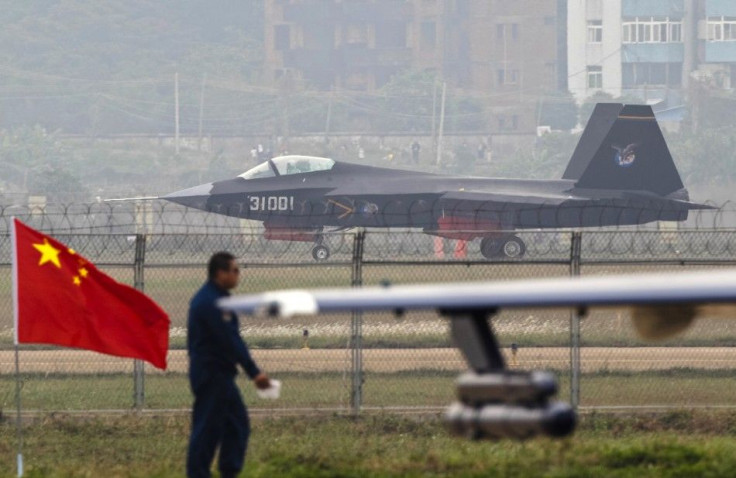China Shows Off Stealth Fighter, Other Weapons Systems During Obama APEC Visit

U.S. President Barack Obama was in Beijing on Tuesday for the Asia-Pacific Economic Cooperation summit meeting. And what better opportunity it was for China to show its rival superpower its new stealth jet prototype, the design of which it acquired through cyber attacks against a Lockheed Martin subcontractor.
Test flights of China's new J-31 fighter jet prototype, its second new radar-evading warplane, coincided as Mr Obama delivered his speech during the APEC meeting. Ironically, in a series of meetings later with Chinese leaders, the American president implored on China to stop cyber theft of trade secrets.
Operational stealth planes are so far only found and produced by the U.S. The company Lockheed Martin is so far the only firm to have successfully exported one, known as the F-35. But China is known for mimicking almost everything it can get it hands on from bags to medicines. Acquiring the design mechanics of the supposedly exclusive F-35 Joint Strike Fighter design was only a matter of time. China's J-31 and the much earlier J-20, its first stealth jet, possess too much similar design features and equipment as that with the F-35.
Apart from new aircraft. China also put on display Tuesday its other new military acquisitions such as missile launchers. The Zhuhai Airshow 2014 featured the new missile launcher FB 60 which, according to Economic Times, can fire 48 missiles at one single time to targets within a 30-km radius. Others put on display were the Y-20 heavy air transport plane.
Geng Ruguang, a deputy general manager of Aviation Industry Corporation of China (AVIC), told local media the Y-20 is a wide bodied military transport aircraft. Comparing it with Russia's IL-76 and the U.S.' C-17, he said the Y-20 is more technologically advanced than the other two.
China also launched the new CM-708UNA submarine-launched cruise missile in Zhuhai. Applicable for various submarines for targeting medium-to-large ships and inshore targets, the 128-kilometer range missile can be launched by torpedo tube, China Aerospace Science and Industry Corporation (CASIC) said. Powered by a turbo engine and solid rocket booster, CASIC said the missile employs a strap-down inertial navigation system plus satellite navigation, a high-precision radar seeker as well as digital control.
The Zhuhai Airshow 2014 also saw the launch of the FK-3 Surface-to-Air Missile (SAM) defense system. Its operational range is 50 to 100 kilometres and has an operational altitude of between 50 metres to 27 kilometres, according to portal carnewschina.com. This was also developed by CASIC.
A short-range missile, the new PL-9C surface-to-air system, was also launched during the event. Its' kill range is between 400 to 8,000 metres, and an operational altitude of 30 to 5,000 metres. Defense News said it has three system components, the AF902 fire control system, twin 35mm anti-aircraft guns, and a missile launching vehicle capable of handling four missiles.





















